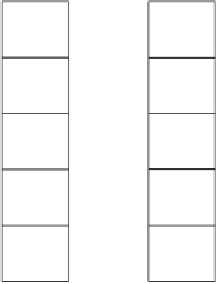Image Processing Reference
In-Depth Information
nature of the problem. In removal of impulsive noise, it could be the median. The ap-
erture would then act as a “correction” to the median. The resulting filter should
therefore never be worse than the best known to date, but may well be better.
A number of variations on the aperture filter have been introduced including
multimask and two types of multiresolution approaches. Hirata et al. used a win-
dow that was defined at several resolutions.
13
At the finest resolution, every loca-
tion in the window was used. At coarser resolutions, these locations were combined
to give a window that covers a larger area with a smaller number of cells. This is il-
lustrated in Fig. 7.17(a). The filter switches between the scales as follows: When a
new pattern is encountered, the training set is checked to determine if that pattern
was observed a given number of times at the finest resolution. If it was, the output is
determined from this data. If it was not observed at the finest resolution, the next
resolution is checked. It is more likely that a pattern will have been observed at a
coarser resolution because the search space is much smaller. This process proceeds,
and an output is formed using the finest resolution for which sufficient training data
is available.
A different type of multiresolution approach was introduced by Green et al.
14
This work uses a single H-shaped window as shown in Fig. 7.17(b). The resolution
of the window becomes coarser towards the edges. The principle here is that the
fine details are captured at the center of the window and that the overall signal
shape is captured by the coarser cells at the extremes of the window. The latter al-
Figure 7.17
Multiresolution aperture filter.































